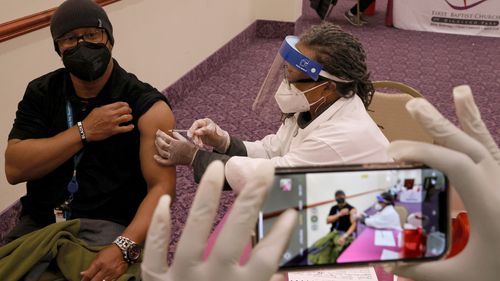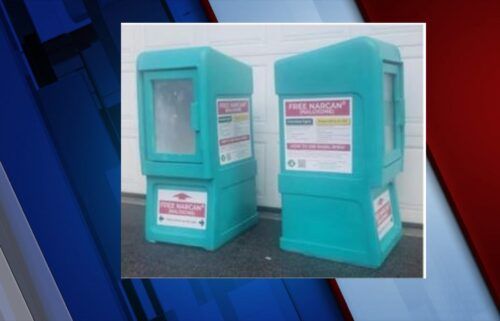In 19 US states, at least half of adults are fully vaccinated against Covid

The US is reporting some of the lowest Covid-19 metrics in nearly a year and officials say we’re finally turning the corner. But vaccination rates have slowed nationwide and are uneven across American communities.
For parts of the US, it will be an uphill battle to get more shots into arms. But experts say that challenge is critical — and officials need to deploy all kinds of strategies to help boost vaccinations.
It’s our best shot to overcome the pandemic.
“There’s a small percentage of people who just really, really don’t want (the vaccine). We’re going to have to work on that, but to me that’s a later issue,” Dr. Ashish Jha, dean of the Brown University School of Public Health, told CNN on Wednesday. “There are a lot of people who have questions, so part of it is just helping address questions people have.”
For others, barriers in getting the vaccine are often not being able to afford to take time from work, he added, so it’s important to bring workplaces into the conversation of helping people get vaccinated.
“It’s really going to have to be an all-of-the-above strategy, of bringing vaccines to people,” Jha said. “It’s the ground game and it’s going to be a lot of work.”
Nearly 48% of the US population has received at least one Covid-19 vaccine dose, according to data from the Centers for Disease Control and Prevention. And roughly 37.8% of the population is fully vaccinated, the data shows.
And in 19 states, at least half of adults are fully vaccinated. Those are Colorado, Connecticut, Hawaii, Iowa, Maine, Maryland, Massachusetts, Minnesota, Nebraska, New Jersey, New Mexico, New York, Pennsylvania, Rhode Island, South Dakota, Vermont, Virginia, Washington and Wisconsin, as well as Washington, DC.
We’ll likely need booster shots soon
As more Americans get their shots, it’s also “highly likely” people will need Covid-19 booster shots as the level of protection from the vaccines starts to decline or more breakthrough infections — defined as cases among vaccinated individuals — are reported, Dr. Anthony Fauci told CNN on Wednesday.
“And when you do get a booster…. there’s a major increase in the level of antibodies following a booster,” Fauci said.
How soon could those boosters be needed? “I believe it likely will be within a year,” Fauci said during an Axios interview.
“We know that the vaccine durability of the efficacy lasts at least six months, and likely considerably more, but I think we will almost certainly require a booster sometime within a year or so after getting the primary,” he added.
Pfizer CEO Albert Bourla also told Axios on Wednesday a booster vaccine may be needed as soon as eight to 12 months after people receive their second shot.
“The data that I see coming, they are supporting the notion (that) there will be a need for a booster somewhere between eight and 12 months,” he said.
Pfizer has not yet finished its trials on a booster vaccine.
“I believe in one, two months we will have enough data to speak about it with much higher scientific certainty,” Bourla added.
What was behind the CDC guidance
Meanwhile, many Americans are still trying to navigate the latest guidance from the CDC, which said last week fully vaccinated Americans can — for the most part — ditch their masks.
The sudden change triggered policy changes across the country — with some local and state leaders as well as businesses dropping their mask mandates.
Experts worry that without verification systems in place, parts of the US will now have to rely on a kind of honor system on who’s choosing to mask up.
On Wednesday, supermarket chain Kroger announced fully vaccinated employees and customers will no longer need to wear masks in the company’s stores, distribution centers, plants, and offices.
The updated policy, which will adhere to state and local guidelines, says non-vaccinated associates will be required to wear a mask. And associates in pharmacy and clinic locations will be required to continue wearing a mask, a spokesperson said.
Speaking to CNN on Wednesday, Fauci said the CDC made the change in guidelines “purely to allow people who have been fully vaccinated to realize that the scientific data itself indicates that it is safe for them to go without a mask not only outdoors but also indoors.”
But instead, he said, many Americans interpreted the guidance to mean it was time for everyone to shed masks altogether, which is “obviously not the case,” he said.
CDC Director Dr. Rochelle Walensky defended the guidance before a Senate Appropriations Committee hearing on Wednesday.
“People have said that we moved too slow. People have said that we moved too fast. We moved at the speed that the science gave us,” she said.
That guidance, Walensky said, was aimed at individuals to better understand what the science on vaccines shows and help them make informed decisions based on the vaccination rates and transmission rates in their own communities. And the guidelines are just that: advice. It’s local officials who make the final call on mask mandates, Walensky said.
“If you have a county that has low vaccination rates and high rates of disease, that county may interpret our guidance differently than a county that has high vaccination rates and low incidence of disease,” she said. “So we really have to do this at the local level, because where there’s less vaccination, the virus will emerge.”
Children need to keep wearing masks, experts say
More than a week after the Food and Drug Administration expanded the emergency use authorization for Pfizer’s Covid-19 vaccine to include people 12 to 15 years old, one expert says it’s been better than expected.
“As we’ve seen this new age category, from 12 to 15, it’s brought renewed hope,” Dr. Lisa Costello, a pediatrician at West Virginia University Medicine Children’s Hospital and a member of the American Academy of Pediatrics’ Committee on State Government Affairs, told CNN.
“Many of the people who I know that work the various vaccine clinics, they’ve told me it felt like December when we were giving those first shots,” Costello added “People are so hopeful.”
The US has already vaccinated more than 600,000 12- to 15-year-olds, Walensky said Tuesday.
But since there is no vaccine approved for children under 12, the American Academy of Pediatrics recommended Wednesday that children and adults who are not yet fully vaccinated still wear masks in certain settings.
Children should continue wearing masks in public places, particularly when social distancing isn’t possible, said Dr. Yvonne Maldonado, chair of the AAP’s Committee on Infectious Diseases. Children can take off their masks when they are with family members from the same household or at small gatherings with fully vaccinated family members and friends.
Children can also take off their masks during water sports, like swimming, or activities that could pose a safety risk, like gymnastics, Maldonado said.
Texas, Gov. Greg Abbott issued an executive order this week prohibiting state governmental entities such as cities and school districts from requiring mask wearing.
“Public schools may continue to follow current mask-wearing guidelines through June 4. After June 4, no student, teacher, parent, or other staff member or visitor can be required to wear a mask while on campus,” the governor’s office said in a news release.
Texas State Teachers Association President Ovidia Molina called the move frustrating and hurtful.
“We’re back to the same fearful place that we were before,” Molina said. “We know that masks are a safety measure that we need, because we are around many people, our students and our coworkers.”

